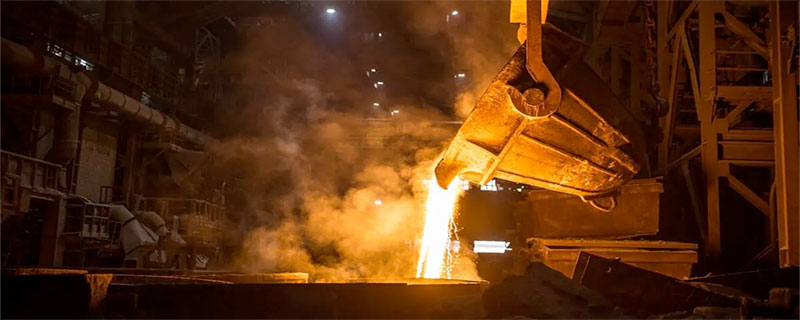Transforming the UK Steel Industry
Since coming into power, the UK government has committed £2.5 billion to growing UK steel, begun work on a Steel Strategy for expanding the sector, and formed a council of experts to guide decision-making. These changes will shape the industry for decades to come.
But what’s on the table, and has the government offered a sense of direction?
The current state of UK steelmaking
Currently, the steel sector appears to be in a familiar state of decline: Tata and British Steel are cutting thousands of jobs, Liberty Steel faces winding-up orders, and Celsa Steel has been sold to an investment fund. Even the government’s financial commitment now comes with uncertainty, offering only “up to £2.5 billion”.
If UK steel is not exempted from Trump’s 25% tariff – it would be in the US’ interest to do so as the UK is a leading supplier of specialist steels for their defence and aerospace sectors – things could get much worse.
However, at the same time, £1 billion of public money is supporting new electric arc furnaces (EAFs) in Port Talbot and Scunthorpe, Marcegaglia are investing £50 million in a new EAF, and Sheffield Forgemasters have received the go-ahead for a state of the ‘machining hall’. Good news for the industry and emissions.
What could £2.5 billion achieve if spent effectively?
Options include expanding EAFs, investing in hydrogen-based steelmaking, or prioritising processing rather than production, such as rolling steel for wind turbines and cars. Each is different but requires significant investment that could quickly exhaust £2.5 billion.
The industry’s competitiveness also needs attention. High electricity prices and borrowing costs, sluggish planning systems, and slow grid connections make the UK a tough environment for steelmaking. Addressing these systemic issues is crucial for the industry’s competitiveness and growth.
However, existing steelmakers already face these challenges, creating a political dilemma: spend £2.5 billion to maintain the status quo or pivot to new ventures, potentially upsetting established players, unions, and the public?
Paving the way for growth
A balance that works for everyone is possible, but it requires shifting from reactive rescue deals when things go wrong, to creating a forward-looking, coordinated plan that leverages the UK’s strengths.
Five overarching actions can offer this brighter future:
- Accelerate electrification
The UK’s progress on clean power is undoubtedly a strength: the ability to produce cleaner steel for a world that increasingly wants it. However, uncompetitive electricity prices, high capital costs, and slow grid upgrades deter investment.The Treasury should intervene to lower industrial electricity bills by expanding exemptions to charges like network costs, which could be paid for via general taxation.
Additionally, the government should outline plans for its steel fund beyond Port Talbot and Scunthorpe. This funding will need to balance capex support for new assets with measures to reduce wholesale electricity prices for all electro-intensive industries, which could act as a stronger draw for businesses of all sizes to invest in electrification in the UK.
- Support demand for UK steel
The UK government should also better utilise complementary policy initiatives. For example, the government’s plan to triple offshore wind will create enormous demand for steel. The Steel Strategy should ensure UK steelmakers are well-positioned to meet growing demand.Similarly, the UK should be capitalising on its strong R&D capabilities, with more support for innovative production methods. Helping businesses to pull these technologies through to a commercial scale can also create export opportunities into high-value markets where quality and sustainability are paramount.
- Prioritise clean UK steel
The UK government spends hundreds of millions on steel for public projects. Introducing procurement guidelines that require this steel to come from low-emission, domestic sources would create a direct incentive to invest in clean steel operations in the UK, benefiting the economy and local communities, and reducing emissions. - Close the loopholes on steel imports
The UK’s carbon border adjustment mechanism (CBAM), set to apply to imported steel in 2027, will levy a carbon price equal to what UK producers pay – a crucial policy to establish international competitiveness. However, the current plan has significant loopholes: imports worth less than £50,000 are exempt, and those without verifiable emissions data are assigned a ‘global average emissions intensity’. The government must close these loopholes or the CBAM will fail to capture a significant quantity of imports and allow the worst polluters to pay less. - Secure green iron through trade, not domestic production
The lack of cheap hydrogen and iron ore deposits means that domestic ironmaking is unlikely to be competitive in the near future. Instead of putting billions into white elephant investments, the UK should form strategic trade partnerships to secure green iron from countries with abundant iron ore and cheap hydrogen, such as Brazil, the US, and Canada.This would secure primary steel production capabilities, to the benefit of wider domestic manufacturing, while also reducing the cost of abatement and enhancing global steel supply chains.
A bold vision for UK steel
The UK government has a unique opportunity to transform the steel industry, but it requires bold decisions and a coordinated strategy. By prioritising electrification, aligning policies to boost demand, and fostering strategic trade partnerships, the UK can lead in green steel production and create opportunities across the country.
Source: E3G









Leave a Reply
Want to join the discussion?Feel free to contribute!